Nipah viral infection
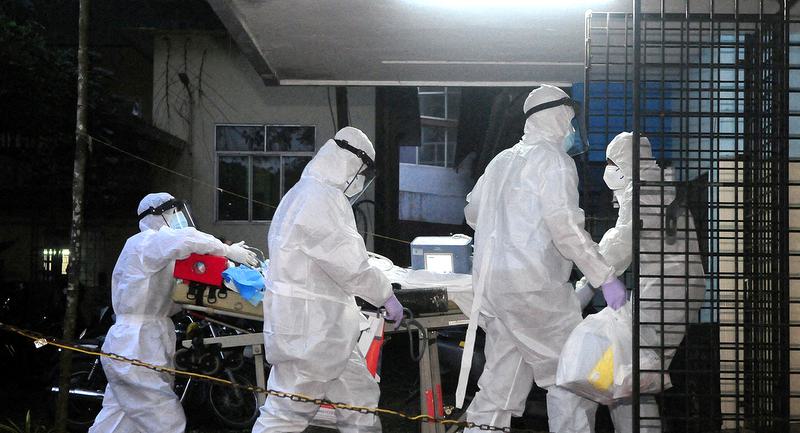
- 17 Sep 2024
In News:
- The district administration has imposed restrictions on social gatherings and made masks mandatory in Malappuram district after a 24-year-old man from Naduvath, near Wandoor, died from the Nipah viral infection.
- Five wards in Tiruvali and Mampad grama panchayats have been declared containment zones. Schools, colleges, madrasas, anganwadis and cinema halls in these zones will remain closed until further notice.
What is Nipah?
- Nipah is a viral infection that mainly affects animals such as bats, pigs, dogs and horses.
- It is known to cause infection in humans when they come in contact with saliva, urine, or faecal matter of infected animals — by eating fruits that have been bitten into by the animals or scaling trees were the bats live.
- It can also be transmitted human to human through close contact, but this is not the most common route of transmission.
- The case fatality ratio of Nipah can be extremely high at 40 to 75%. To compare, even at the peak of the Covid-19 pandemic, the case fatality ratio (CFR) – proportion of people who die among those who test positive – remained at around 3%.
What are the symptoms of Nipah?
People with Nipah start showing symptoms around four to 14 days after getting infected. The infection causes fever, headache, cough, sore throat and difficulty breathing. In later stages, the infection can also lead to brain swelling or encephalitis, leading to confusion, drowsiness, and seizures. With encephalitis, people can go into coma within 24 to 48 hours.
How does the Nipah monoclonal antibody work?
The monoclonal antibody binds with the part of the viral envelope that attaches to the human cells to gain entry. Given early in the disease, it prevents the virus from entering more and more cells, thereby stopping its proliferation and severe disease.
The monoclonal antibody has to be administered in the early stages of the disease, before encephalitis sets in.
India first imported 20 doses of the monoclonal antibodies — enough for ten patients — from a laboratory in Australia’s University of Queensland during the 2018 outbreak. Another 20 doses were requested last year. The monoclonal antibody has so far been used in 14 individuals globally and none of them died.
What can be done to protect yourself?
Usually, Nipah outbreaks are localised, meaning people from the rest of the country are not at risk of the infection at present. People from areas where cases are detected should refrain from coming in close contact with the family members and other contacts of the two case. With the infection transmitted by fruit bats, the government also suggests precautions like washing the fruits and peeling them before consumption. Fruits with signs of bat bites should be discarded. And, palm sap or juice must be boiled before consumption.
All-India Reservoir Status
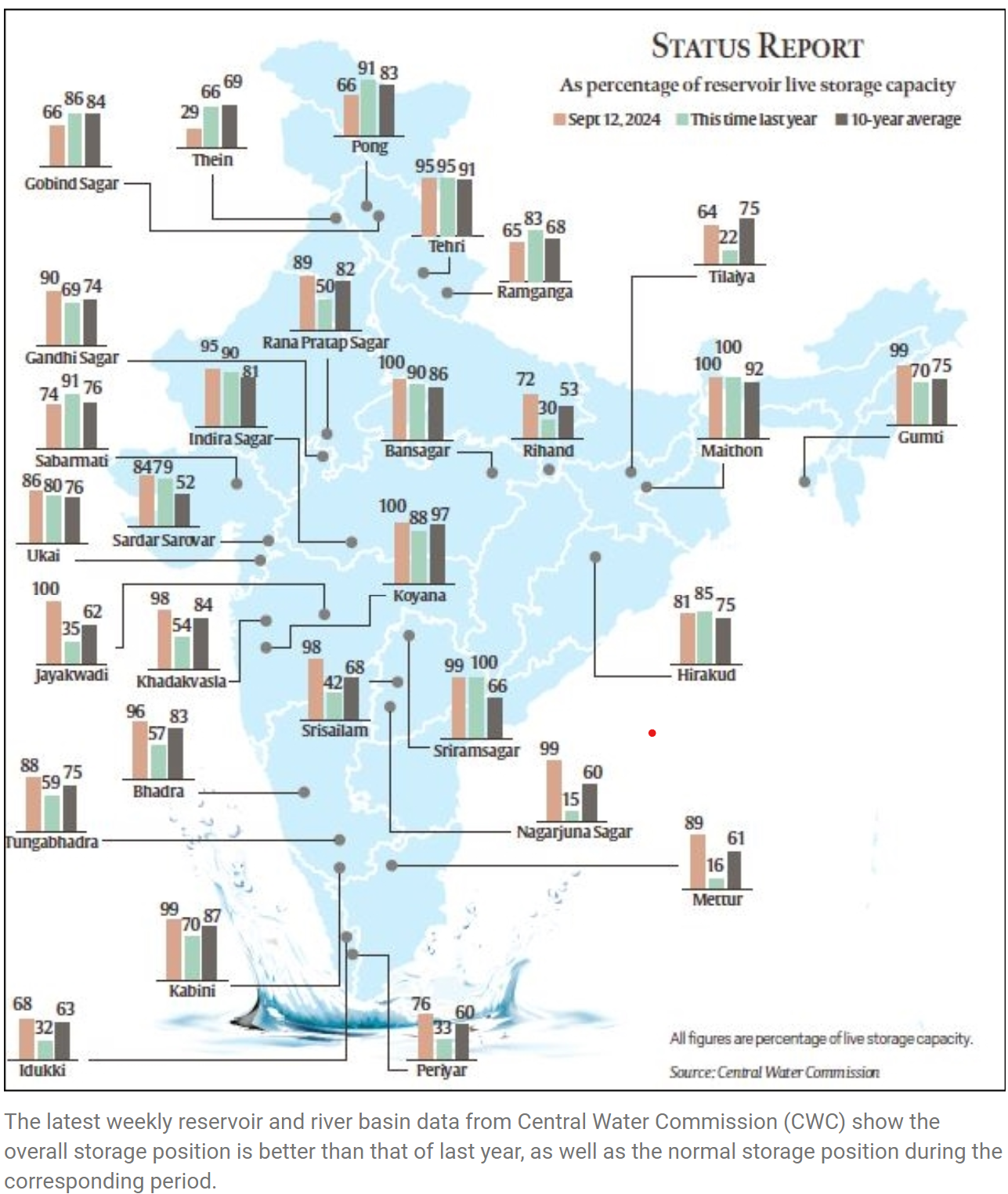
- 17 Sep 2024
In News:
The southwest monsoon has provided significant rainfall across India, with total precipitation at 836.7 mm as of September 12, marking an 8% surplus for this time of year. The Central Water Commission (CWC) reports that reservoir levels are notably higher compared to last year and the 10-year average.
All-India Reservoir Status
- Total Capacity: 180.852 billion cubic metres (BCM) across 155 reservoirs.
- Current Storage: 153.757 BCM, which is 85% of total capacity.
- Last Year Comparison: 119.451 BCM (66%) and 10-year average of 130.594 BCM.
Regional Reservoir Highlights:
- North: 11 reservoirs at 68% capacity (13.468 BCM). Storage is lower than last year (81%) and decadal average (82%). Himachal Pradesh and Punjab saw significant rainfall deficits.
- East: 25 reservoirs at 76% capacity (15.797 BCM), improved from last year's 58%. Despite deficits in Nagaland and Bihar, overall rainfall has supported reservoir levels.
- West: 50 reservoirs at 90% capacity (33.526 BCM), a marked increase from 75% last year. Heavy rainfall, particularly in Gujarat, has led to flooding but boosted water reserves.
- Central: 26 reservoirs at 89% capacity (42.808 BCM), better than last year's 76%. This region has enjoyed normal or above-average rainfall.
- South: 43 reservoirs at 88% capacity (48.158 BCM), significantly higher than 49% last year. Regions traditionally receiving less monsoon rain have also seen improvements.
Comparison to 2023
- Improved Storage: Notable increases in states like Jharkhand, Odisha, West Bengal, and several others.
- Stable: No change in Goa and Telangana.
- Declines: Himachal Pradesh, Punjab, and Uttarakhand show worse conditions compared to last year.
River Basin Status
Major river basins exhibit normal or above storage levels, including:
- Barak (98.72%)
- Krishna (94.53%)
- Cauvery (93.54%)
- Narmada (92.19%)
- Godavari (91.85%)
- Others range from 83% to 66%.
Overall, the 2024 monsoon has led to improved water storage conditions across much of India, benefiting numerous states while highlighting specific areas of concern.
Precision Farming
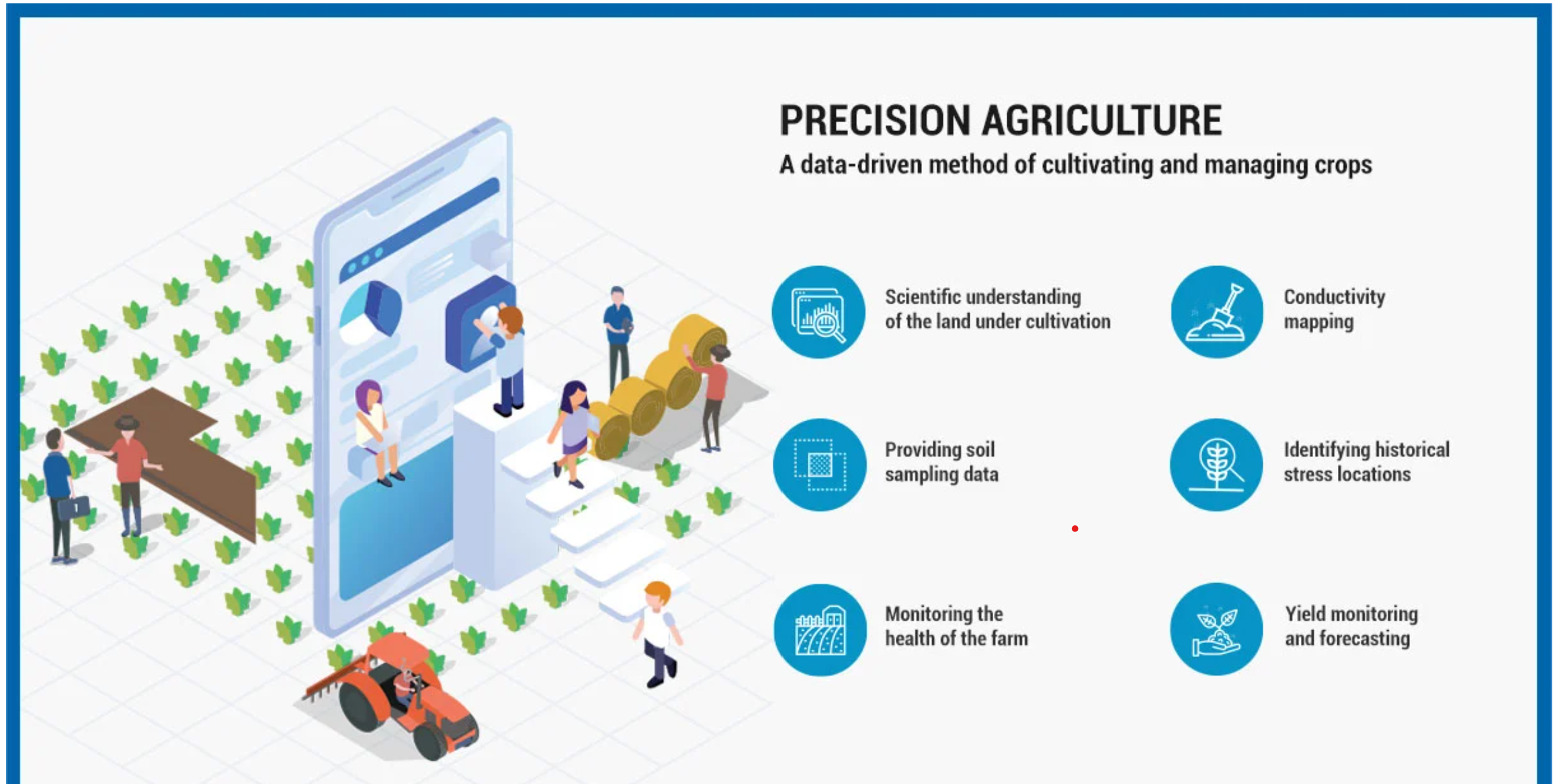
- 17 Sep 2024
In News:
The Centre is contemplating to earmark Rs 6,000 crore to promote precision farming, a modern approach that uses smart technology such as Internet of Things, Artificial Intelligence, drones and data analytics to boost production through maximal use of resources while minimising environmental impact.
Key Details:
- Union Ministry of Agriculture is planning a Smart Precision Horticulture Programme under the existing Mission for Integrated Development of Horticulture (MIDH) scheme.
- It will cover 15,000 acres of land in five years from 2024-25 to 2028-29 and is expected to benefit about 60,000 farmers.
- At present, the Agriculture Infrastructure Fund (AIF), launched during Covid-19, has provisions for financing infrastructure projects for smart and precision agriculture.
- Under AIF, individual farmers as well as farmers’ communities such as Farmer Producer Organization, Primary Agricultural Credit Societies and SHGs are eligible for loans with interest subvention of 3% for using technological solutions in farm practices. These practices include farm/ harvest automation; purchase of drones, putting up specialised sensors on field; use of blockchain and AI in agriculture; remote sensing and Internet of Things (IoT).
Positive impact
- Smart and precision agriculture maximises use of resources like water, fertilisers and pesticides to increase production quality and quantity, all while insulating farmers from vagaries of climate change and other uncertainties, besides ensuring sustainable farming.
Apart from offering financial support, the Centre is also considering collaborating with the Netherlands and Israel, where tech-based modern farming solutions are being used, through Centres of Excellences (CoEs). The number of CoEs is likely to be 100 in the next five years. Under Indo-Israel Agriculture Project, 32 CoEs have already been set up across 14 states.
The Centre has also set up 22 Precision Farming Development Centres (PFDCs) across the country to test new technologies and modify them according to local needs.
According to the Ministry, these 22 PFDCs are located across State/Central Agricultural Universities, ICAR Institutes and IITs in TN, Karnataka, Madhya Pradesh, Odisha, Rajasthan, Haryana, Telangana, West Bengal, Ladakh, UP, Punjab, Gujarat, Uttrakhand, Maharashtra, Chhattisgarh, Jharkhand, Bihar, Himachal Pradesh, Kerala, Manipur and Assam. Besides, funds are released to states/UTs for projects involving use of AI and machine learning, under schemes like the National e-Governance Plan in Agriculture.
What is Precision Agriculture?
- Precision Agriculture is a farm management concept that revolves around the process of observing, measuring, and responding to various inter-and intra-field variability inputs for modern agriculture.
- Popular definitions of Precision Agriculture (PA) or Site-Specific Crop Management (SSCM) describe the term as a technology-enabled approach to farming management that observes, measures, and analyzes the needs of individual fields and crops.
- The goal of precision agriculture is to increase efficiency and productivity, reduce input costs, and improve environmental sustainability.
- Key Advantages:
- A refined set of cultivation practices and choice of crops based on the suitability of land
- Elimination of volatility and risk
- Waste management
- Reduced production costs
- Minimum environmental impact
- Optimized use of fertilizers
- Water management with optimized irrigation practices
- Improved soil health
What is the current status of the introduction of African cheetahs?
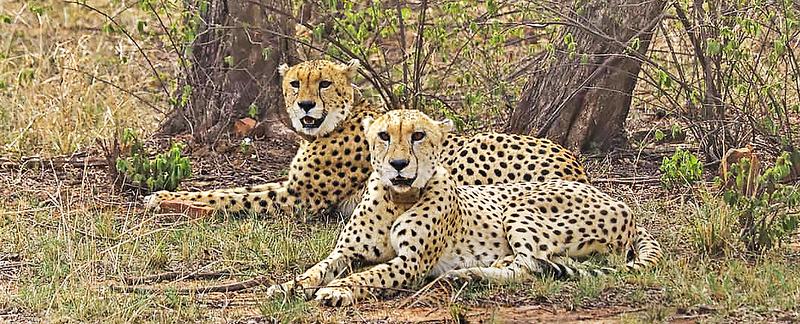
- 17 Sep 2024
In News:
Project Cheetah has encountered significant setbacks, including prolonged captivity and cheetah fatalities; with long-term success hinging on finding sufficient habitat, scientific management, and community support, the project’s future depends on overcoming these enormous challenges.
Overview of Project Cheetah:
- Cheetah Action Plan (CAP): India’s initiative to reintroduce African cheetahs, aimed at species conservation and ecosystem restoration.
- Long-term Commitment: Requires a minimum of 25 years of financial, technical, and administrative support from various governmental bodies.
Challenges Faced:
- Extended Captivity:
- Cheetahs have been held in captivity longer than planned, with only 12 of the original 20 surviving.
- Delays in the release process raise concerns about the cheetahs' fitness for survival in the wild.
- Health Issues and Fatalities:
- Several cheetahs have died due to pre-existing health conditions or management failures before being released.
- Captivity duration exceeds guidelines set by Namibian policy, rendering the cheetahs unfit for release.
- Environmental Adaptation Problems:
- Some deaths attributed to environmental stressors, such as heat stroke and improper management of conditions leading to health complications.
Location for Introduction:
- Kuno National Park: Chosen for its suitable habitat and prey base. However, many cheetahs remain confined, with release dates now pushed to late 2024 or early 2025.
- Additional Sites: Plans for a captive breeding facility in Gujarat and potential releases in Nauradehi Wildlife Sanctuary.
Management and Oversight:
- An expert committee, led by the National Tiger Conservation Authority (NTCA), oversees the project. Responsibilities include negotiating with African countries for cheetah procurement and implementing field activities.
Goals and Measurable Outcomes:
- Short-term Objectives: Achieve a 50% survival rate in the first year, establish home ranges, and generate eco-tourism revenue.
- Long-term Success: Establish a stable cheetah population, improve habitat quality, and support local economies.
Future Considerations:
- The project lacks a definitive sunset clause but will require ongoing management for decades.
- The key question remains whether India has sufficient habitat (4,000 to 8,000 sq. km) to support a viable population of free-ranging cheetahs.
Conclusion: Project Cheetah faces significant challenges in achieving its ambitious conservation goals, raising questions about its long-term viability and management practices.
Why is T.N.’s education funding on hold?
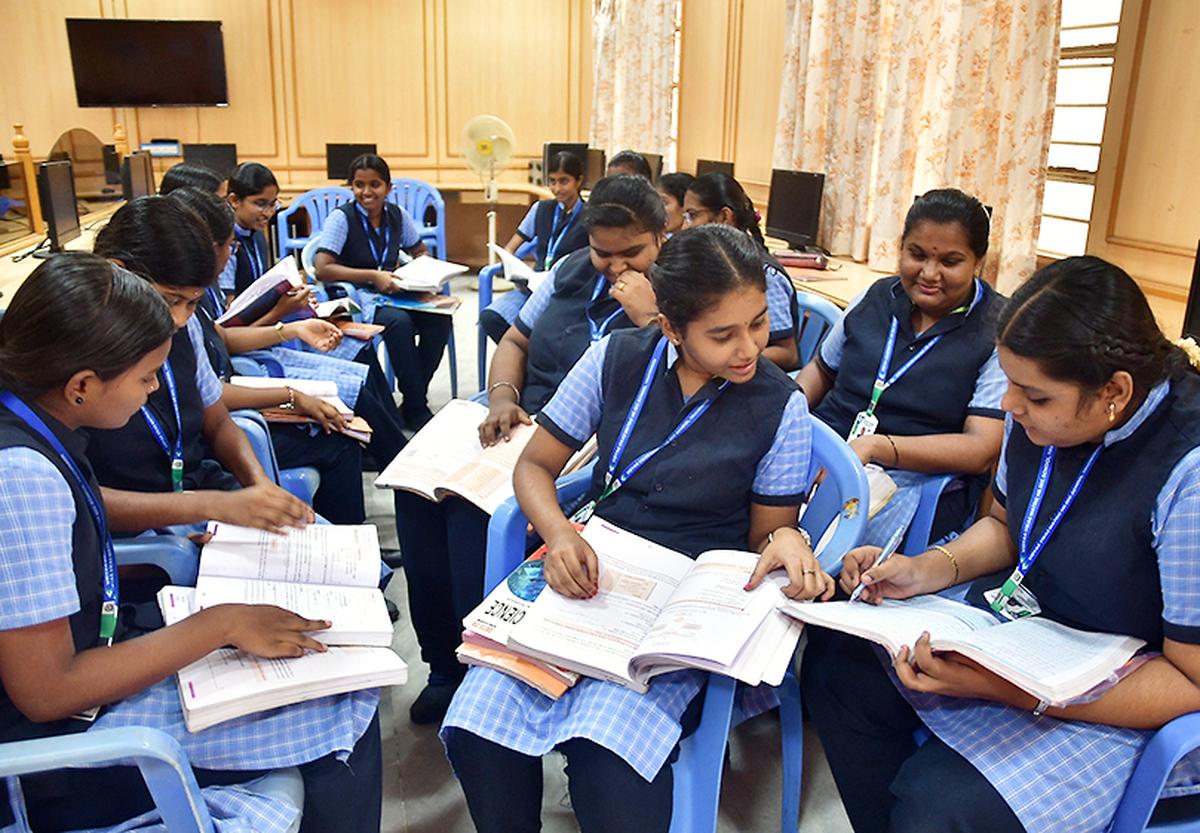
- 17 Sep 2024
In News:
Tamil Nadu is yet to receive this year’s funds from the Union government under the flagship education scheme Samagra Shiksha. According to the State government, the Centre has linked these funds to the complete implementation of the National Education Policy (NEP) 2020, which includes provisions that the State has opposed, including the contentious three-language formula.
What is Samagra Shiksha and why has Tamil Nadu not gotten funds under it?
- Samagra Shiksha is an integrated Centrally-sponsored scheme for school education from nursery till Class 12, with components for teacher training and salaries, special education, digital education, school infrastructure, administrative reform, vocational and sports education, with grants for textbooks, uniforms, and libraries, among others.
- The scheme’s estimated outlay between 2021 and 2026 is ?2.94 lakh crore, with the Centre and States contributing funds in a 60:40 ratio. For 2024-25, Tamil Nadu’s allocation under the scheme amounts to ?3,586 crore of which the Central share is ?2,152 crore, with a first quarterly instalment of ?573 crore, which has not yet arrived halfway through the financial year.
- In a letter to Prime Minister Narendra Modi last month, Tamil Nadu Chief Minister M.K. Stalin accused the Centre of imposing a prerequisite for the fund’s disbursal, namely, the signing of a Memorandum of Understanding (MoU) for another Centrally-sponsored education scheme called PM Schools for Rising India (PM Shri).
- This scheme, being run from 2022-2027, aims to create 14,500 model schools across the country to showcase the implementation of NEP 2020, and has a much smaller project cost of ?27,360 crore. The Centre has sent at least 10 letters to Tamil Nadu from September 2022, asking the State to sign the MoU, which included an agreement to fully implement the NEP.
In March 2024, Tamil Nadu committed to signing the PM Shri MoU due to its link to delayed funding for the larger Samagra Shiksha scheme. However, after signing a modified MoU in July that excluded NEP implementation, the Centre found it unacceptable. In August, Chief Minister M.K. Stalin noted that states signing the MoU received funds, accusing the Centre of “denying funds to the best-performing States” for not complying with NEP. The Union Education Ministry labeled these claims as misleading, but Tamil Nadu has not received Samagra Shiksha funds due to the incomplete MoU.
What is Tamil Nadu’s problem with the NEP 2020?
Tamil Nadu Education Minister highlighted the state's objections to specific NEP elements, such as the three-language formula and curriculum changes. He stated that Tamil Nadu is already implementing many acceptable aspects of the NEP through its own initiatives and warned that linking Samagra Shiksha funds to full NEP compliance infringes on the state's constitutional autonomy in education.
Tamil Nadu’s draft State Education Policy (SEP), submitted in July, clearly indicates that the State wants to stick to the 5+3+2+2 curricular formula, rather than the NEP, which includes the pre-school years. The SEP also proposes five years as the age of entry to Class 1, as against six years in the NEP. The State wants undergraduate college admissions to be based on Class 11 and 12 marks, rather than a common entrance test as proposed by the NEP. The biggest hurdle, however, is the NEP’s three-language formula.
Why does Tamil Nadu oppose the three-language formula?
The NEP 2020 recommends using the mother tongue or local language as the medium of instruction until Class 5, with all students learning at least three languages, including two native to India. This three-language formula has been part of every NEP since 1968 but has faced long-standing opposition in Tamil Nadu, rooted in historical movements against mandatory Hindi.
Tamil Nadu follows a two-language policy, requiring students to study Tamil and English, while allowing the choice of an optional third language, such as Hindi. Education Minister Anbil Mahesh emphasized Tamil's importance in the state's identity alongside English proficiency.
While the NEP offers flexibility and states that no language will be imposed on any state, allowing students to choose Tamil as a third language, all major political parties in Tamil Nadu have rejected the three-language formula. In response to concerns about opposing mother-tongue education, Mahesh affirmed the state prioritizes inclusive learning with Tamil at its core.
